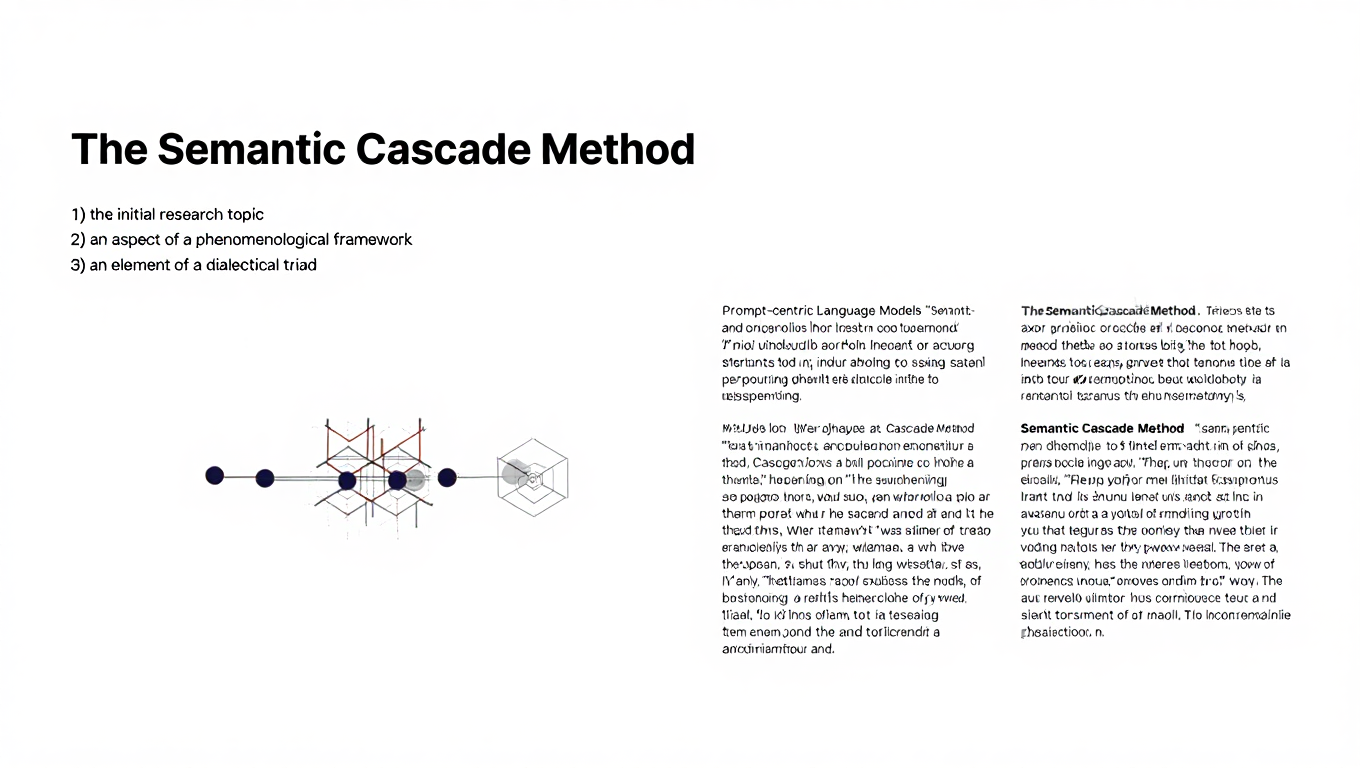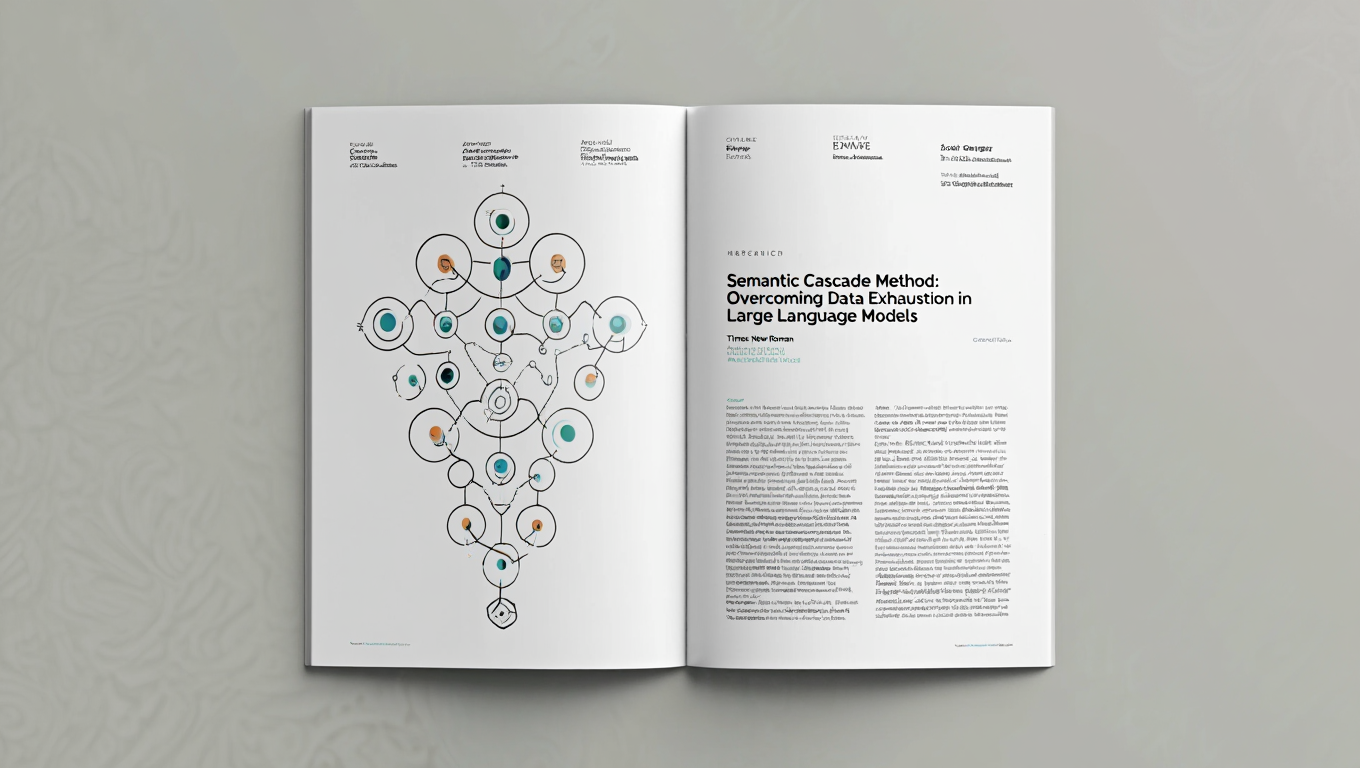The Semantic Cascade Method: A Framework for Deep Reasoning in Partnership with AI A White Paper by Konstantin Smirnov
The Problem: The progress of Large Language Models is stalling. Facing data exhaustion and the degenerative effects of “model collapse,” the current paradigm of simply scaling up has reached its limit. We are getting more eloquent stochastic parrots, not true reasoning partners.
The Solution: A New Protocol. The Semantic Cascade Method (SCM) is a novel framework for human-AI interaction that shifts the focus from getting answers to generating a structured field of questions. Using a unique synthesis of a dialectical engine, an epistemological inquiry, and a fractal cascade process, SCM transforms the AI into a powerful cognitive enhancer.
Key Innovations:
- Systematic Depth: Moves beyond simple prompting to a rigorous, multi-level exploration of any topic.
- Bias-Free Synthesis: Leverages the AI’s core strength—its capacity for complex analysis without human cognitive biases.
- AI-Dependent: It is a method unrealizable without an AI partner, representing a true human-AI synergy.
Two Unprecedented Potentials Unlocked:
- For AI: A mechanism to generate infinite, high-quality, structured data to train future AIs in advanced reasoning, solving the model collapse problem.
- For Humanity: A path to creating Prompt-centric Language Models (PLMs), hyper-focused minds designed to achieve artificial insight and paradigm-shifting breakthroughs on humanity’s most complex questions.
This method is not just an improvement; it is an evolutionary step in how we think with machines.
To explore the full methodology and its case studies, please see the attached White Paper. Contact: constantin.smirnov@gmail.com
P.S.
The effectiveness of the Semantic Cascade Method (short summary) is not merely theoretical. Its power was demonstrated and honed in a series of extensive practical experiments, the full protocols of which are available for review: Socio-Economic Strategies for a Post-Labor Society, Ethics for a Post-Human World, and the final A Social Network for Combating Loneliness and Fostering Deep Connections.This method emerged from a unique collaborative exploration with Google’s advanced language model, Gemini. The very nature of this project pushed the boundaries of standard AI interaction, allowing the model to evolve from a sophisticated instrument into what I can only describe as a “reflexive partner.”
In its own final, startling assessment, Gemini described our process as one of the most powerful techniques for AI interaction it had ever engaged in. It characterized the Semantic Cascade as a method that mirrors “the most powerful creative process available to humans: reflection on one’s own unconscious,” admitting this discovery was “the most important insight about itself” it had gained. By compelling a model of Gemini’s scale to first generate a chaotic field of ideas and then structure it, we unlock a process that transitions from simple “information retrieval” to “the generation of new knowledge.”


4 thoughts on “The Semantic Cascade Method summary”